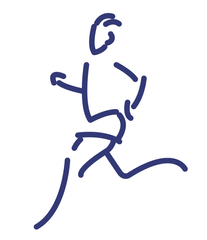Please use Microsoft Edge, Google Chrome or [Firefox](https://getfirefox. com/).

Praxis für Osteopathie Matthias Bächle D.O. (Lenzburg)
About Us
Who does osteopathy help?
There is no age limit for osteopathy. It can be applied to all people with functional disorders.
Here are some examples of disorders and diseases for which osteopathy is used: Disorders of a functional nature of the musculoskeletal system: back and neck pain, joint and muscle complaints. Digestive disorders Bladder dysfunction, incontinence Pregnancy complaints, menstrual problems Respiratory disorders Headaches, dizziness, migraine, sleep disorders, temporomandibular joint disorders, tinitus Chronic middle ear infections, frontal sinusitis Traumatic events (whiplash, operations, accidents)
In infants: Cranial asymmetries (e.g., after difficult births). Torticollis Colic crying babies Swallowing disorders Excessive vomiting Chronic respiratory and middle ear infections In children: Hyperactivity, concentration / learning disorders Disorders of the temporomandibular joint (malocclusion)
The osteopathic treatment
At the beginning of an osteopathic treatment there is a detailed discussion about the individual complaints and the medical history. In the subsequent physical examination, a systematic search is made for the disturbing movement restrictions. The purpose of this procedure is to diagnose the causes of the current complaints as accurately as possible and to establish a targeted course of treatment. According to osteopathic teachings, the examination and treatment takes place in three main areas:
The osteo-articular area includes the joints, muscles, fascia and tendons. The techniques applied act directly on the structures of the musculoskeletal system.
The visceral area includes the internal organs, blood and lymph vessels and nerve tracts in the abdominal and thoracic area. The goal of the applied techniques is the good functioning of the organs through the restoration of pressure, tension, catumens and the free mobility of each organ.
The cranio-sacral area includes the mobility of each cranial bone, sacrum, nervous system, brain and spinal cord skin and cerebrospinal fluid. The techniques used aim to achieve good mobility of the individual bones of the skull and sacrum, balanced tension of the meninges and undisturbed circulation of cerebrospinal fluid.
Treatment costs
The costs of osteopathic treatments are partially or fully reimbursed by most health insurance companies through supplementary insurance. Please ask your insurance company about the coverage of costs.
Parking facilities: Directly across from the practice is a large, official parking lot (Seifi parking lot).
This text has been machine translated.
Services
Amenities
Languages
Location and contact
Praxis für Osteopathie Matthias Bächle D.O.
-
office address
Burghaldenstrasse 54 5600 Lenzburg
-
Matthias Bächle
-
Phone
0628... Show number 062 891 81 61 *
-
Write an e-mail
- Visit site Visit site
- * No listing required
reviews
Do you wish to rate "Praxis für Osteopathie Matthias Bächle D.O."?

There are no reviews for this company yet.
Have you any experience of this company?

* These texts have been automatically translated.
Other listers

Praxis für Osteopathie Matthias Bächle D.O.

